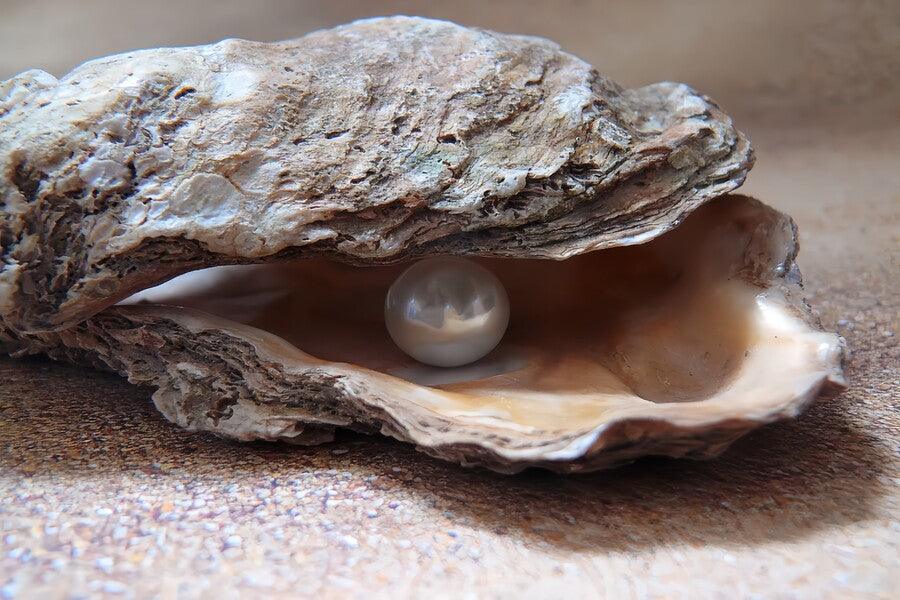Key Takeaways
- Akoya pearls are renowned for their luster, mirror-like appearance and nuances (surface and reflections), with a fascinating story behind their brilliance and beauty.
- Cultivating and harvesting Akoya pearls is incredibly difficult. Why? Find out in this article!
- There are many types of Akoya pearls on the market, with different shapes and prices. Read on to learn how to differentiate them and choose the one to add to your collection!
Introduction to Akoya Pearls
Origin - The Repressive History
This beautiful Akoya pearl has a unique origin. In the 19th century, a man named Kokichi Mikimoto, the son of a noodle shop owner, was always fascinated by pearls from a young age.

Kokichi Mikimoto spent 20 years in pearl culture
At that time, China dominated pearl cultivation. However, after 20 years of research, Kokichi and his team developed a different method to cultivate natural pearls by inserting a small fragment into the Akoya oyster. He then opened the first store in one of Tokyo's most luxurious districts: Ginza.
In 1937, he introduced Akoya pearls to the world at the Paris World's Fair. This presentation marked a turning point for the upper class, and he was nicknamed the "King of Pearls." The perfect shape and brilliant luster of the Japanese Akoya pearl are now well established in the market.
Features
Over the decades, the Akoya pearl has become a symbol of feminine elegance and luxury. But what makes it so unique?
- High Luster: Due to the slower culturing process, the Akoya pearl takes longer to develop, resulting in a compact, bright and vibrant pearl that is characteristic of Akoya pearls.

The great luster of Akoya pearls
- Shape: Akoya pearls have two main shapes: round and baroque. The shape of the nucleus determines the final shape of the Japanese pearl.
- Size : These saltwater gems are the smallest commercial pearls on the market. The typical size of a cultured and harvested pearl is about 12 mm, while the average akoya pearl is about 7 mm. Price is usually assessed based on size rather than weight.
- Color : Akoya pearls come in many colors, such as white, pink, gray, and even green or cream. The white pearl is the most classic, authentic and also the most precious among the pearls of Japan jewelry.
- Value : Akoya pearls are extremely rare; only 5% of pearls produced are considered suitable for sale.
How to Grow Akoya Pearls?
An Akoya pearl is formed inside a shell that grows in water, and its cultivation process lasts about ten months.
First, farmers implant a mother-of-pearl into the Akoya oyster. This nucleus must come from a healthy, carefully selected oyster. This process requires patience, and each farmer must be well trained.
After the nucleus is implanted, farmers transfer these oysters to a pearl farm located in protected lagoons or bays. There, they adjust the environment to ensure optimal oyster growth, monitoring factors such as water conditions, temperature and salinity levels.

The farmer will put the oyster under water
The process of forming the akoya pearl is gradual and completely natural. By slowly growing in cold water, the pearl acquires a solid and shiny appearance. When the time comes, farmers extract the pearl from the shell and check the quality of the akoya pearl. This harvesting step is demanding, but the cultured pearls are worth it.
After removing the pearl, farmers gently clean it and grade it according to size. The shape of the akoya pearl can be round or baroque, and customers can customize their pearl according to their preferences.
How Are Akoya Pearls Presented On The Market?
Once reserved for the upper class, akoya pearls represented wealth and prosperity. Today, thanks to innovation and development, they are produced in large quantities and can be worn daily. Whether you are a minimalist or a romantic, you will easily find the pearl that suits you.
Types of Jewelry
Akoya pearl designs are varied and blend classic luxury with modern charm. Here are some common shapes of akoya pearl jewelry:
- Necklace : You can't go wrong with an akoya pearl necklace, also called "The Classic Necklace." You can choose the one that matches your style, from simple to sophisticated.
- Bracelets : Akoya pearl bracelets are simple yet captivating with their sparkle. Their round shape brightens up your wrist and enhances your look.
- Earrings : This small detail has a big impact on your face. You can choose between studs, drops, dangles or chandeliers.

Small earrings take your items to the next level.
- Rings : It would be a shame not to have an akoya pearl ring in your collection. These gemstone rings add an elegant touch to any outfit.
Price and Value
Akoya pearl items can be used for everyday wear or formal occasions. On average, a pearl sells for between $300 and $1,500. The price of akoya pearls varies depending on several factors, including:
- Origin : In recent years, Akoya pearls have been cultivated not only in Japan but also in Vietnam, China, Thailand and Australia. However, due to their quality and reputation, Japanese pearls are often considered more valuable.
- Luster : The mirror quality of akoya pearls is one of the main factors that attract consumers. The value varies depending on the level of luster.
- Nacre Quality : Nacre plays a central role in the formation of Akoya pearls. The thickness and quality of the nacre layer surrounding the nucleus also influences the value of the pearl.
Tips for Caring for Akoya Pearls
Care and storage of akoya pearls are essential to maintain their luster. Here are some tips:
- Store your akoya pearl in a jewelry box or cloth pouch to avoid scratches. Separate them from other jewelry to prevent the pearl from rubbing.
- Avoid exposing them directly to chemicals. Since pearls are organic and delicate, products like shampoo, body lotion or perfume can damage them.
- Cleaning is an integral part of maintenance. After washing them, dry them gently with a soft cloth. Avoid chemicals or abrasives that could ruin the surface of the pearls.
- Finally, if your jewelry is damaged, do not try to repair it yourself. Call a professional who will know how to restore them properly.

A pearl expert will help you repair your damaged pearls.
Fun Facts About Akoya Pearls
Here are some fun facts about akoya pearls and pearls in general that are more amazing than you might think:
- Akoya pearls represent purity in the pearl industry due to their exceptional luster. They are highly crystallized, giving a brilliant mirror effect.
- The word "Akoya" in Japanese translates to "natural cultured pearl" in English.
- Traditionally, a father will give a pearl necklace to his daughter for her 12th birthday. It can also be given as a symbol of friendship between close friends.
- Once reserved for women, Akoya pearl jewelry is now worn by men, becoming a unisex accessory.
- Even Queen Elizabeth II can't resist Akoya pearls. They have also been a favorite of famous women like Jacqueline Kennedy, Elizabeth Taylor, and the lovely Audrey Hepburn.
- Akoya pearls, freshwater pearls and Australian pearls are among the most famous pearls in the world, each with a distinct meaning and spirit.


